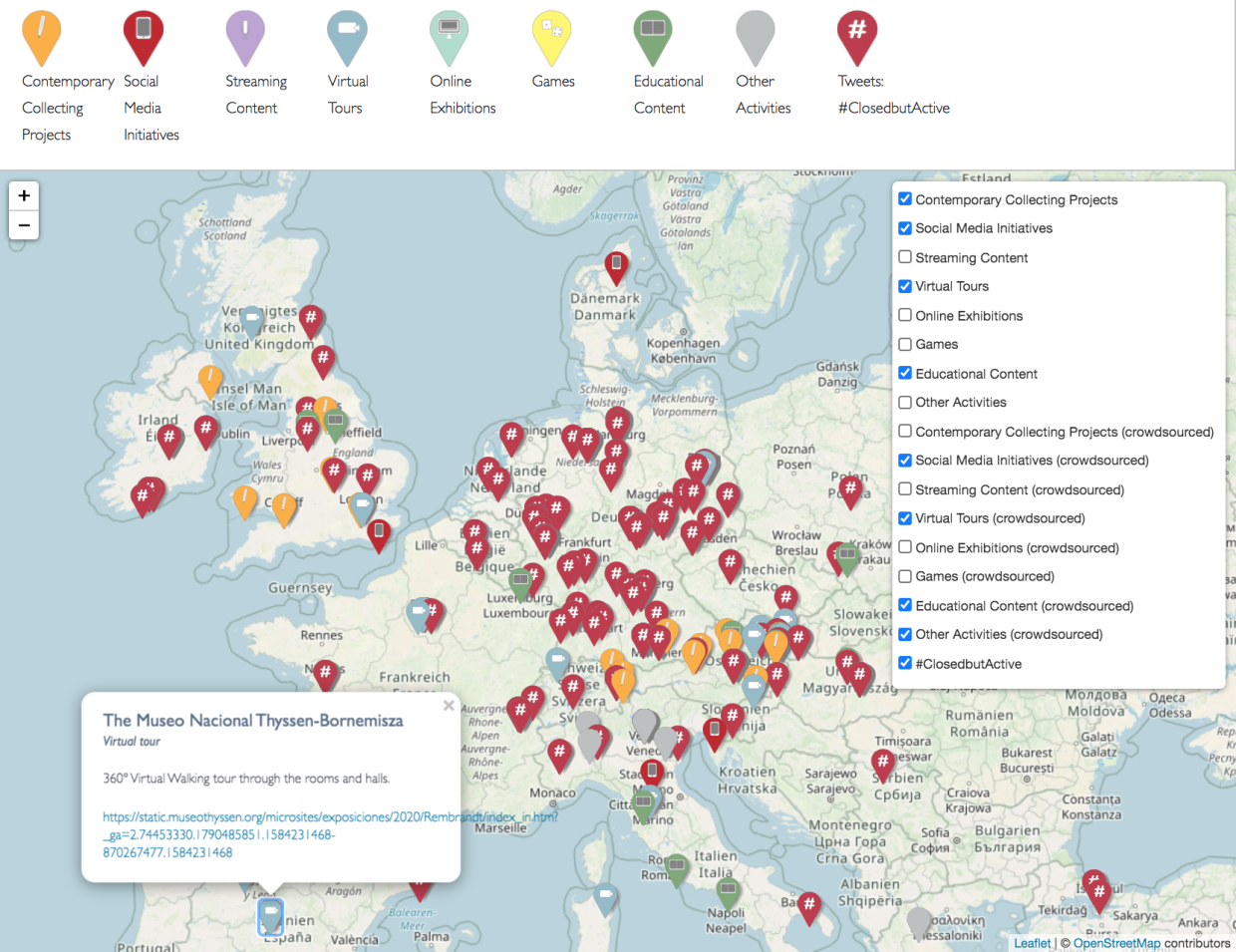Cultural heritage in lockdown
In the first part of 2020, museums were severely affected by the lockdowns enforced by governments around the world due to the COVID-19 pandemic. While closed, museums promoted a broad range of digital projects and activities to continue supporting access to cultural heritage and maintain a relationship with their audiences. Many of these activities have also been highlighted in, and supported by, the media, besides being followed with new curiosity by home-bound audiences.
Museums have drawn on their existing resources, such as online collection portals and social media accounts. They have also delivered new content, such as virtual exhibitions, curatorial talks and virtual tours of their galleries via streaming platforms, and educational material for children and adults (explore examples of such creative approaches on Europeana Pro).
On social media, users shared their own re-creation of famous artworks using everyday objects in their houses (using the hashtags #tussenkunstenquarantaine or #gettymuseumchallenge); cultural heritage professionals shared singular objects and stories from their collections using a variety of hashtags (including #MuseumFromHome, #MuseumsUnlocked, #ClosedButOpen, #ClosedButActive, #ArTyouReady); museums joined TikTok (such as the Uffizi, who has been active on this platform since April); and in the new release of the Nintendo franchise Animal Crossing: New Horizons, gamers could add work of arts from institutions including the Getty Museum and the Metropolitan Museum of Art.
I have been equally fascinated and interested by the innovative ways museums have contributed to the online recreational and informative activities of a broad range of audiences in this period – and in the impact they will have on future digital practices in the sector. For this reason, I have started to document these digital initiatives on a map.
The map
The map, available here, aims to collect and show digital activities developed and promoted by museums during the COVID-19 pandemic. The current dataset is being compiled with the help of Sabrina Melcher, student assistant at the University of Graz, and through crowdsourcing. The categories we chose to sort the various initiatives are: contemporary collecting projects; social media initiatives (i.e. local hashtags and targeted projects); streaming content; virtual tours; online exhibitions; game; educational content; and other types of activities (for initiatives not covered by the previous categories).



